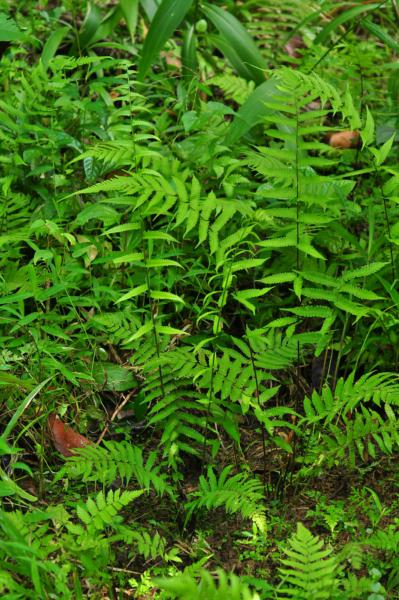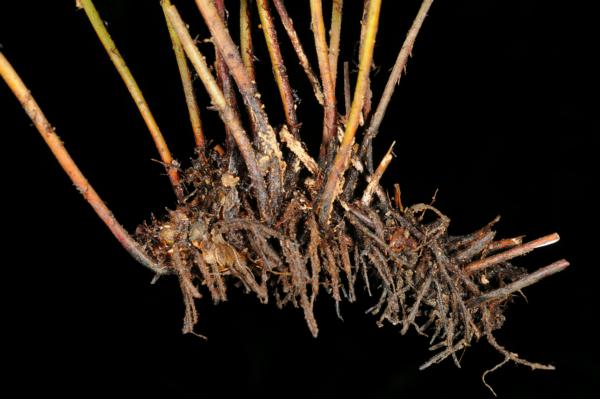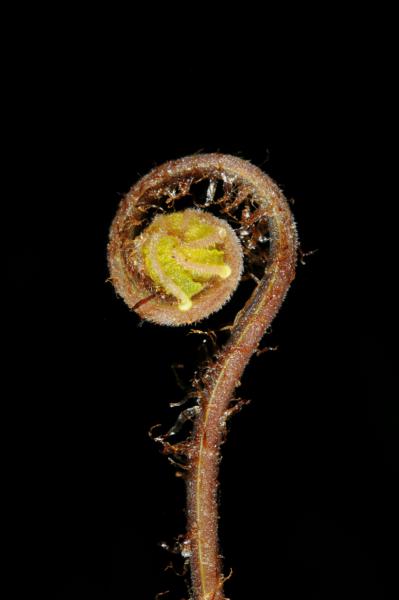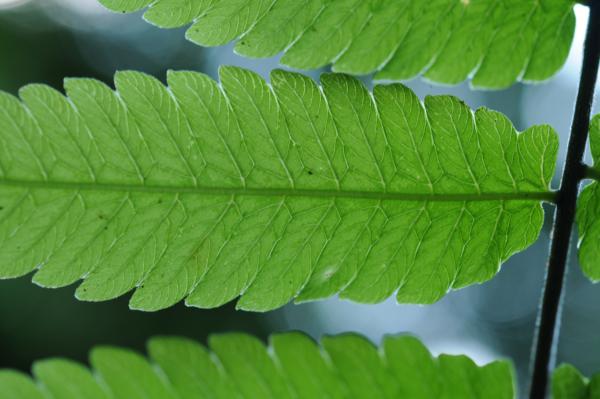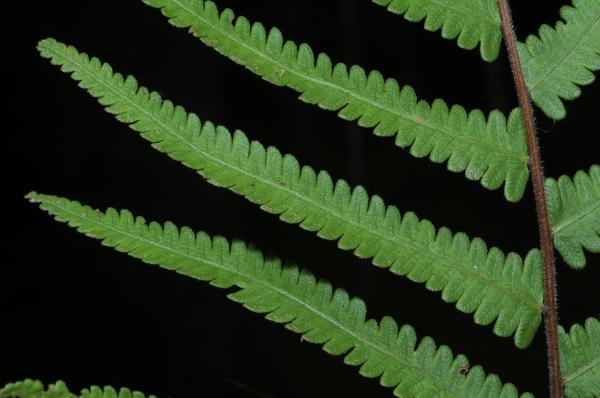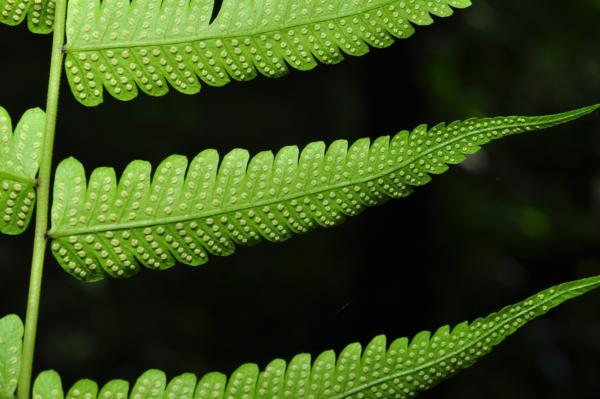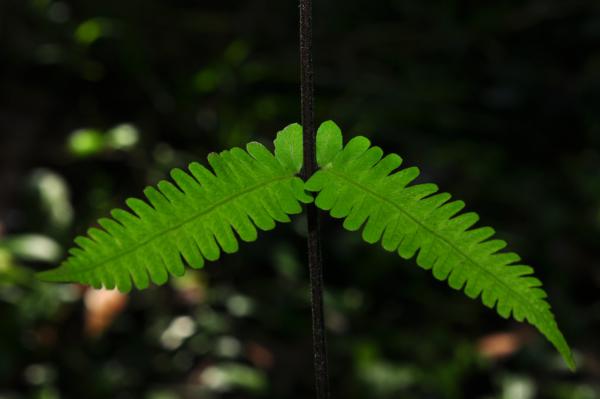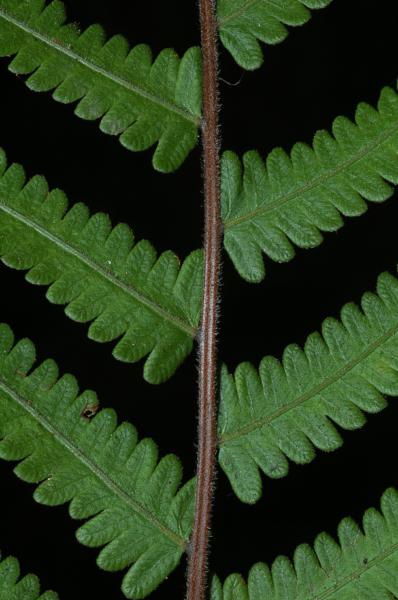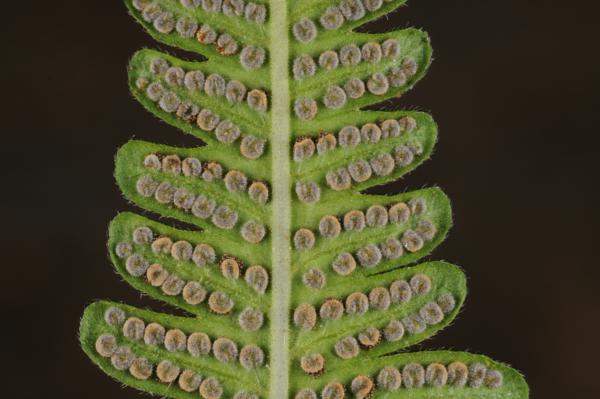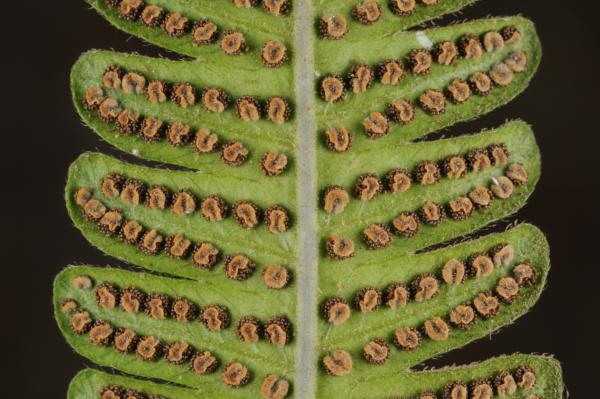
Cyclosorus dentatus (Forssk.) Ching
Family
Thelypteridaceae
Nomenclature
Cyclosorus dentatus (Forssk.) Ching, Bull. Fan Mem. Inst. Biol. 8: 206. 1938; Holttum, Dansk Bot. Ark. 20: 22. 1961; Holttum, Dansk Bot. Ark 23: 233. 1965. – Polypodium dentatum Forssk., Fl. Aegypt.-Arab.: 185. 1775. – Thelypteris dentata (Forssk.) St. John, Amer. Fern J. 26: 44. 1966; Tagawa & K.Iwats., SouthE. Asian Stud. 3(3): 79. 1965; Tagawa & K.Iwats., SouthE. Asian Stud. 5: 65. 1967; Tagawa & K.Iwats., Fl. Thailand 3: 427. 1988. – Christella dentata (Forssk.) Brownsey & Jermy, Brit. Fern Gaz. 10: 338. 1973; Holttum, Kew Bull. 31: 314. 1976; Holttum, Fl. Males., Ser. II, Pterid. 1: 557, f. 1p & 20a. 1982 [‘1981’]; Boonkerd & Pollawatn, Pterid. Thailand: 220. 2000. – Type: Forsskal, Arabia (C).
Cyclosorus subpubescens auct. non (Blume) Ching: Holttum, Rev. Fl. Malaya ed. 1, 2: 273, f. 157. 1955 [‘1954’].
Description
Rhizome short, erect, ascending, or shortly creeping, with a tuft of fronds; scales narrow, about 8 by 1.5 mm, pale brown, with few hairs at margin. Stipes 13–30(–51) cm long, bearing reduced pinnae on upper portion, scaly at base, hairy throughout. Laminae narrowly oblong, acute at apex, gradually narrowing downwards, 30–75(–90) by 8.5–26.5 cm; lateral pinnae 12–25 pairs, patent to ascending, sessile, linear-lanceolate, more or less auricled at base, gradually narrowing towards long-acuminate apex, 4–14 by 1–2 cm, lobed 1/3 to 2/3 way to costa; lower pinnae hardly to gradually becoming smaller downwards but rarely reduced to mere auricles; segments oblong-subdeltoid, oblique, rounded at apex, entire; herbaceous to softly papyraceous, yellow-green to green, densely pubescent on both surfaces, not glandular or with extremely sparse tiny yellow glands; basal veinlets and basal second anterior ones uniting below callous-membrane. Sori medial, round; indusia large, densely hairy .
Distribution in Thailand
NORTHERN: Mae Hong Son, Chiang Mai, Chiang Rai, Lamphun, Lampang, Phrae, Tak, Phitsanulok; NORTH-EASTERN: Phetchabun, Loei, Khon Kaen; SOUTH-WESTERN: Kanchanaburi, Phetchaburi, Prachuap Khiri Khan; CENTRAL: Saraburi, Nakhon Nayok, Bangkok; SOUTH-EASTERN: Prachin Buri, Chanthaburi, Trat; PENINSULAR: Surat Thani, Phangnga, Nakhon Si Thammarat, Trang, Satun.
Wider Distribution
Pantropical.
Ecology
Usually on rather dry ground in light shade or in forests at low or medium altitudes.
Proposed IUCN Conservation Assessment
Least Concern (LC). This species is widespread and not under any known threat.
Voucher specimens - Thailand
Middleton et al. 4788, Phetchaburi, Kaeng Krachan National Park (E); Middleton et al. 5127, Loei, Phu Suan Sai National Park (E); Middleton et al. 5493, Trang, Ton Tok Waterfall (E).
Habit
Rhizome
Crozier
Venation
Pinnae from above
Pinnae from beneath
Basal pinnae
Upper surface of rachis and pinnae
Sori
Sori
Site hosted by the Royal Botanic Garden Edinburgh. Content managed by Stuart Lindsay, Gardens by the Bay, Singapore and David Middleton, Singapore Botanic Gardens. Last updated 24 January 2012
